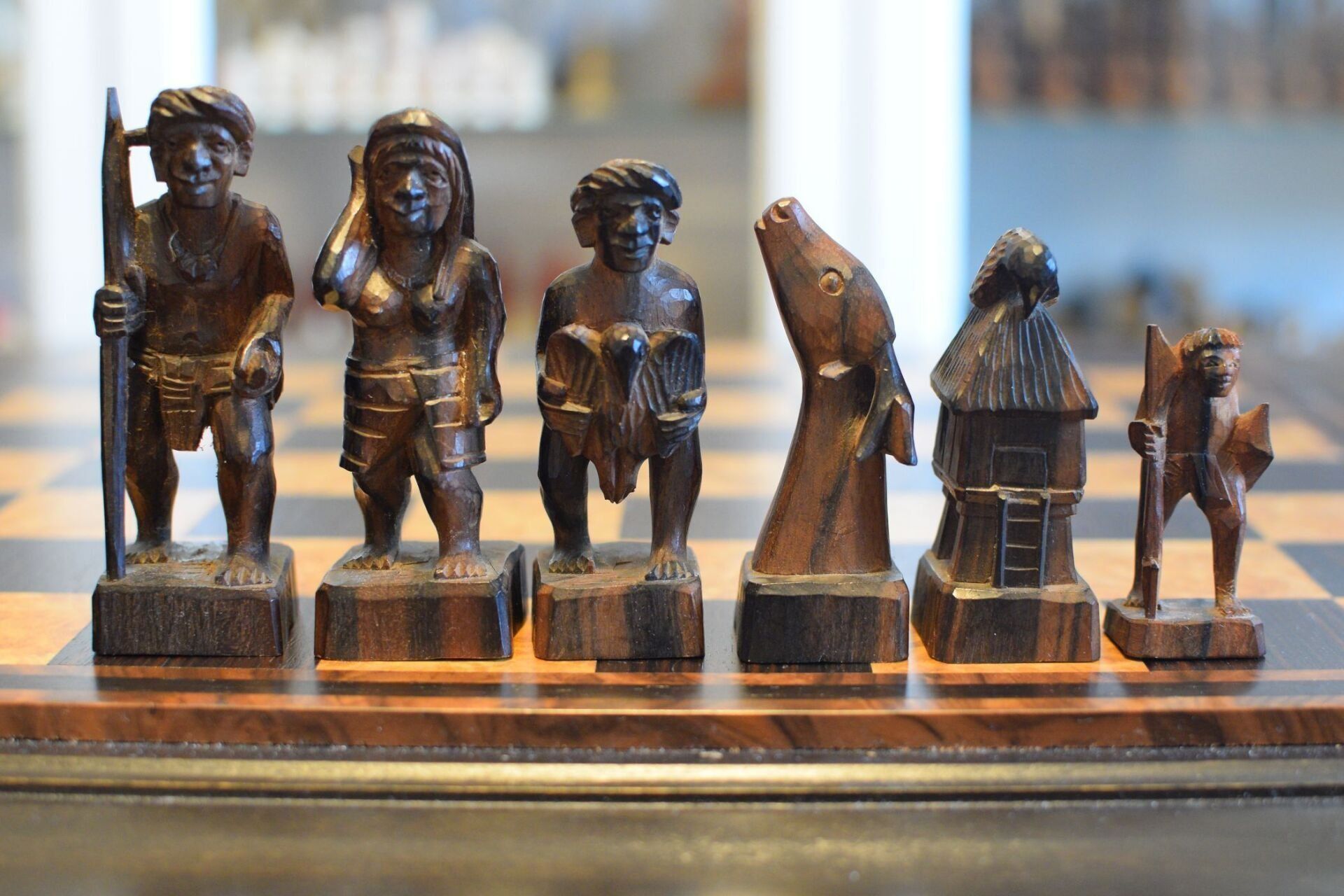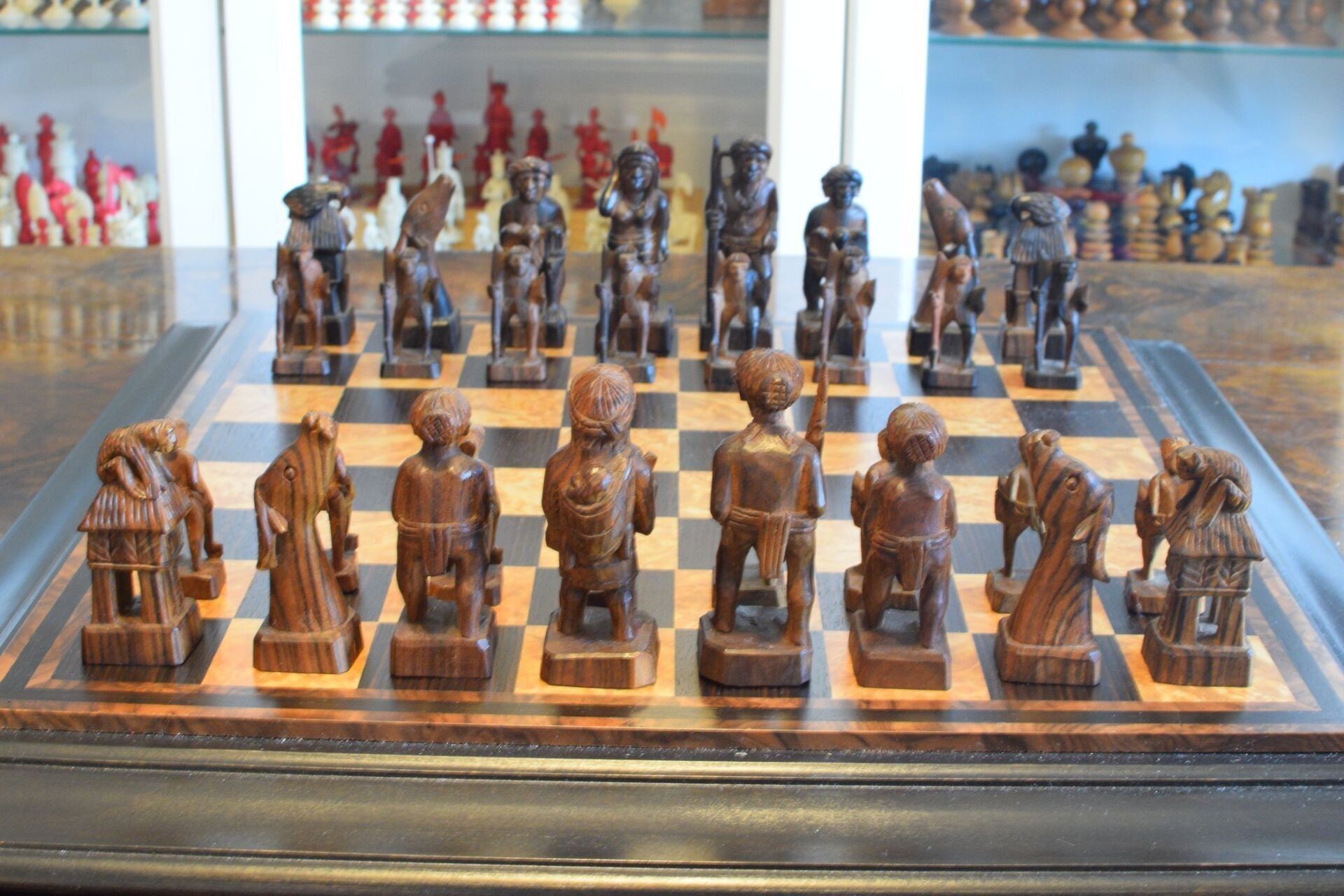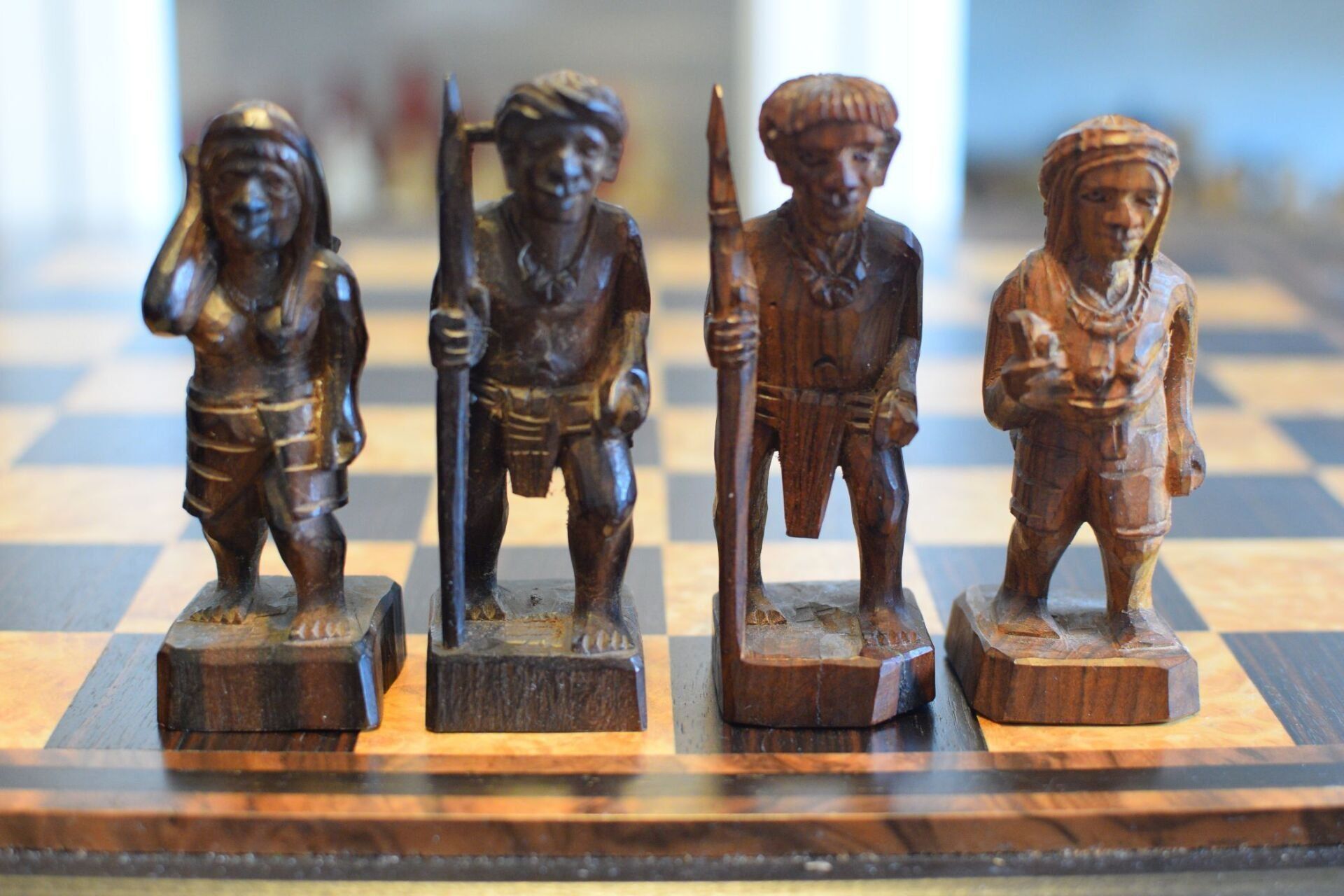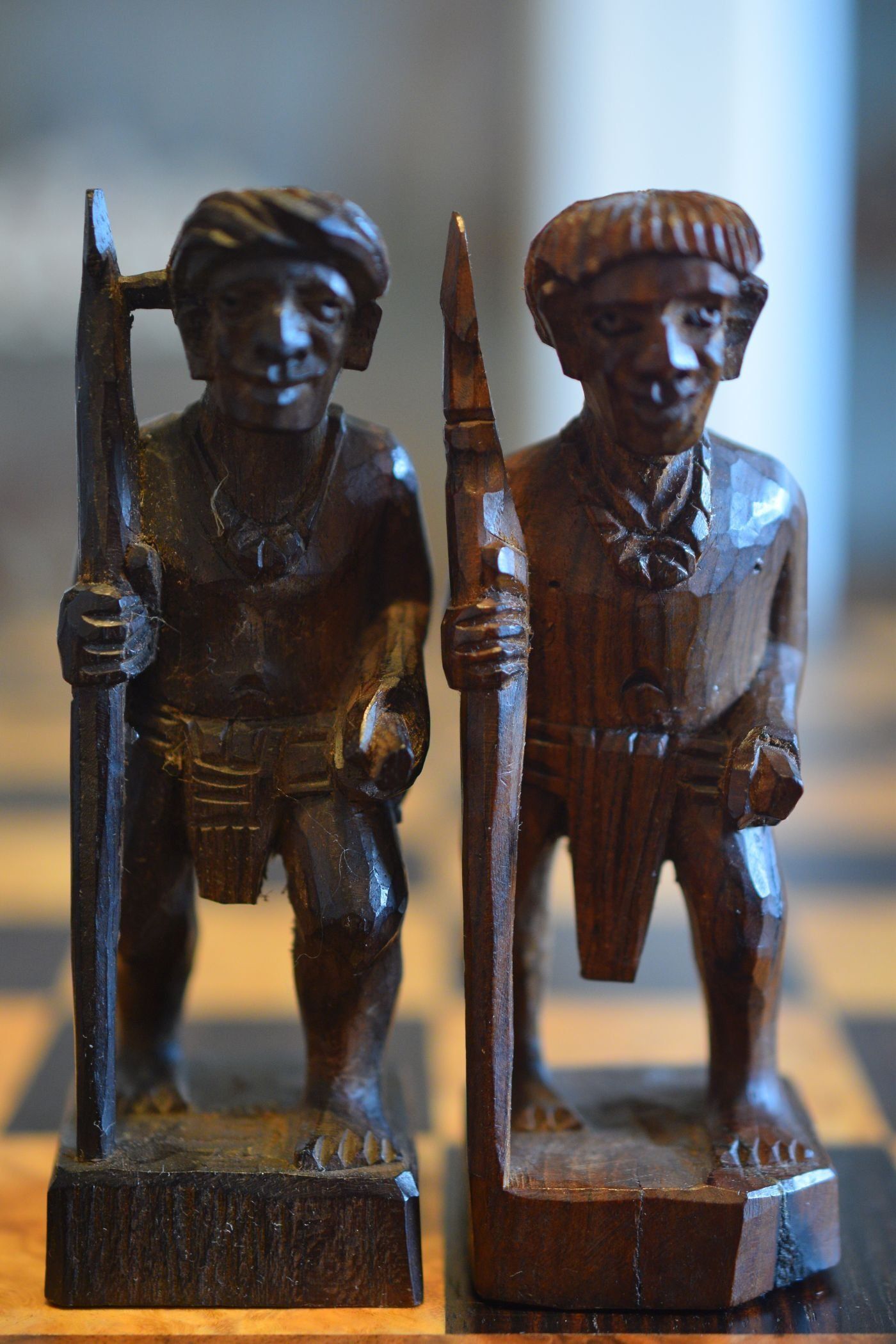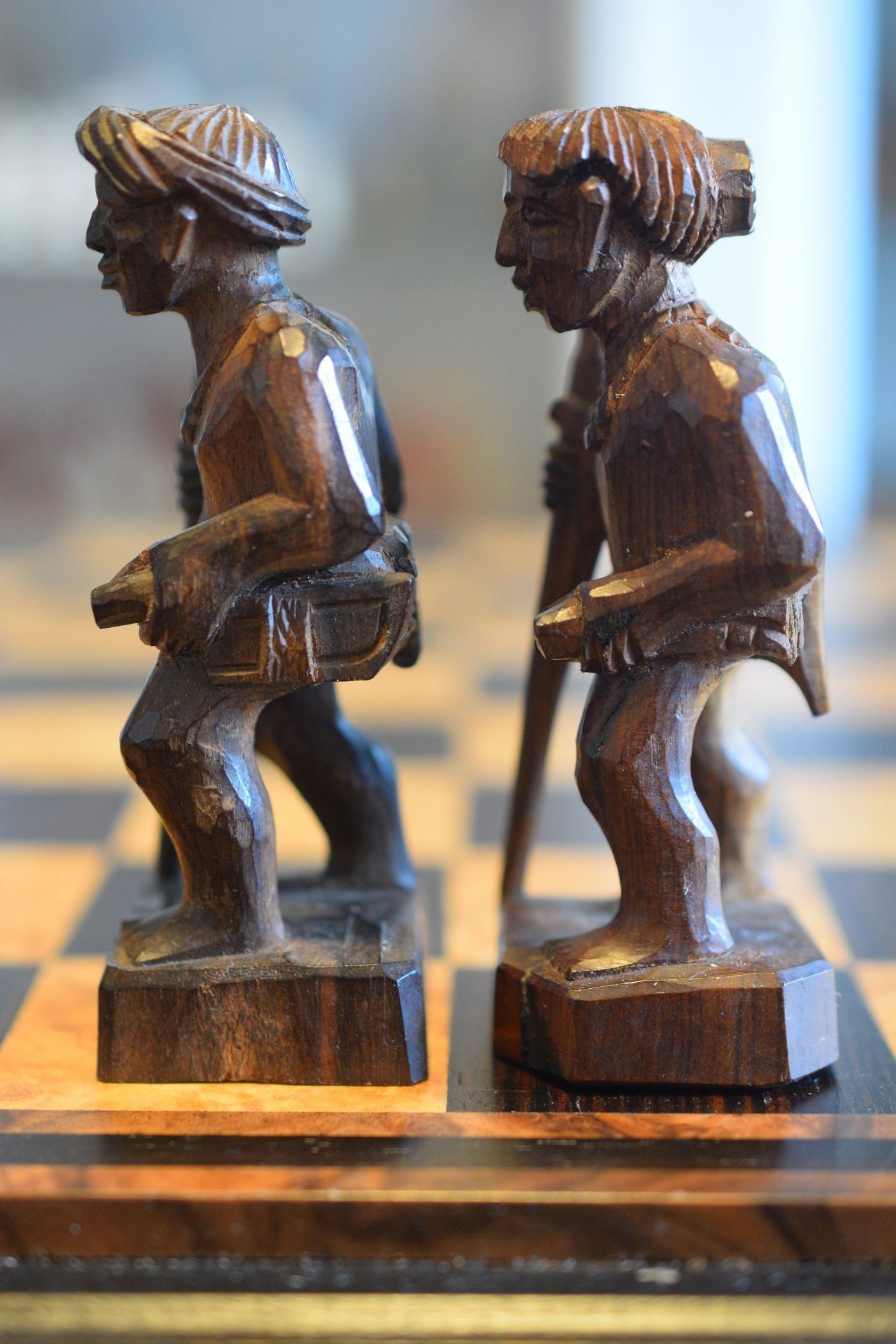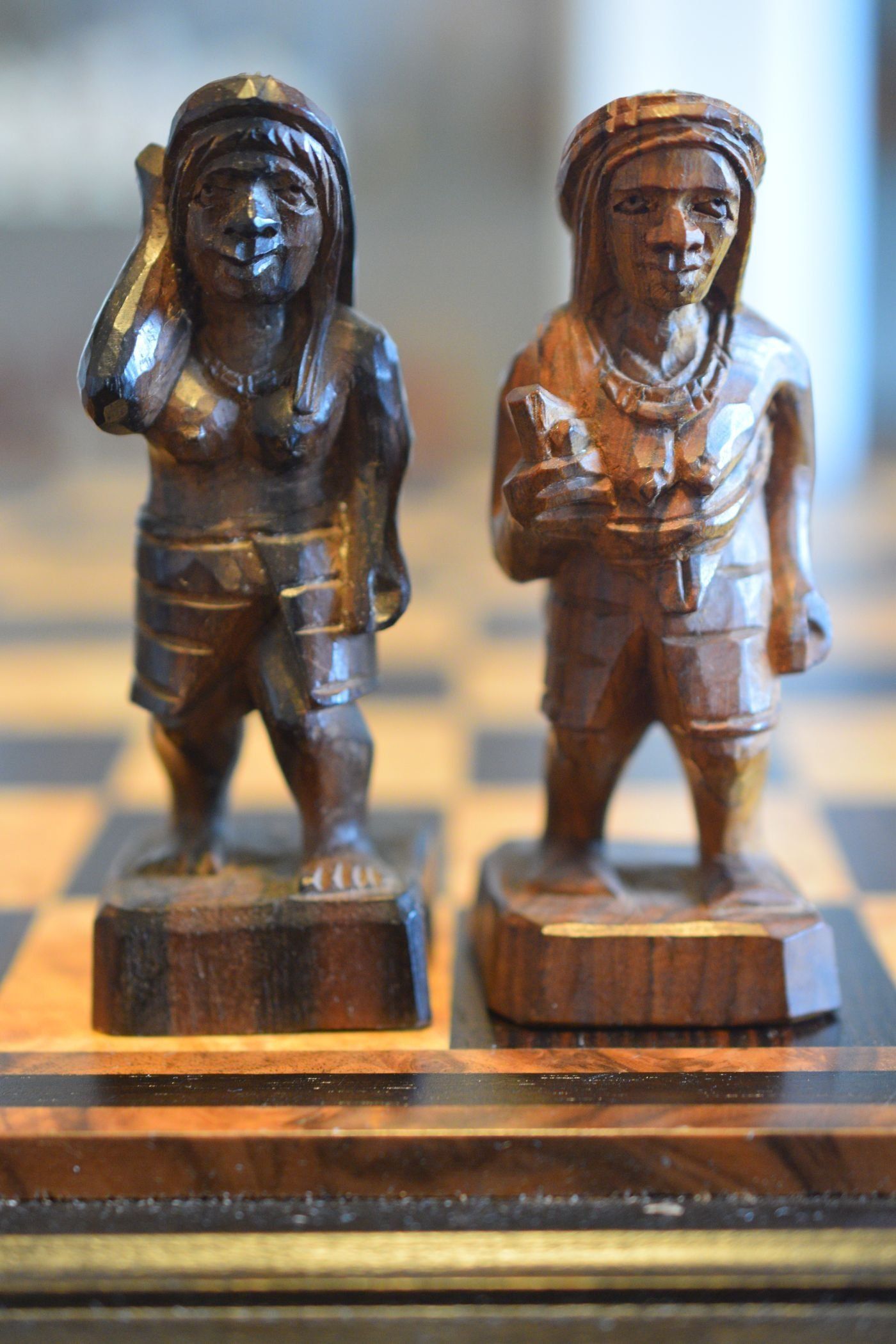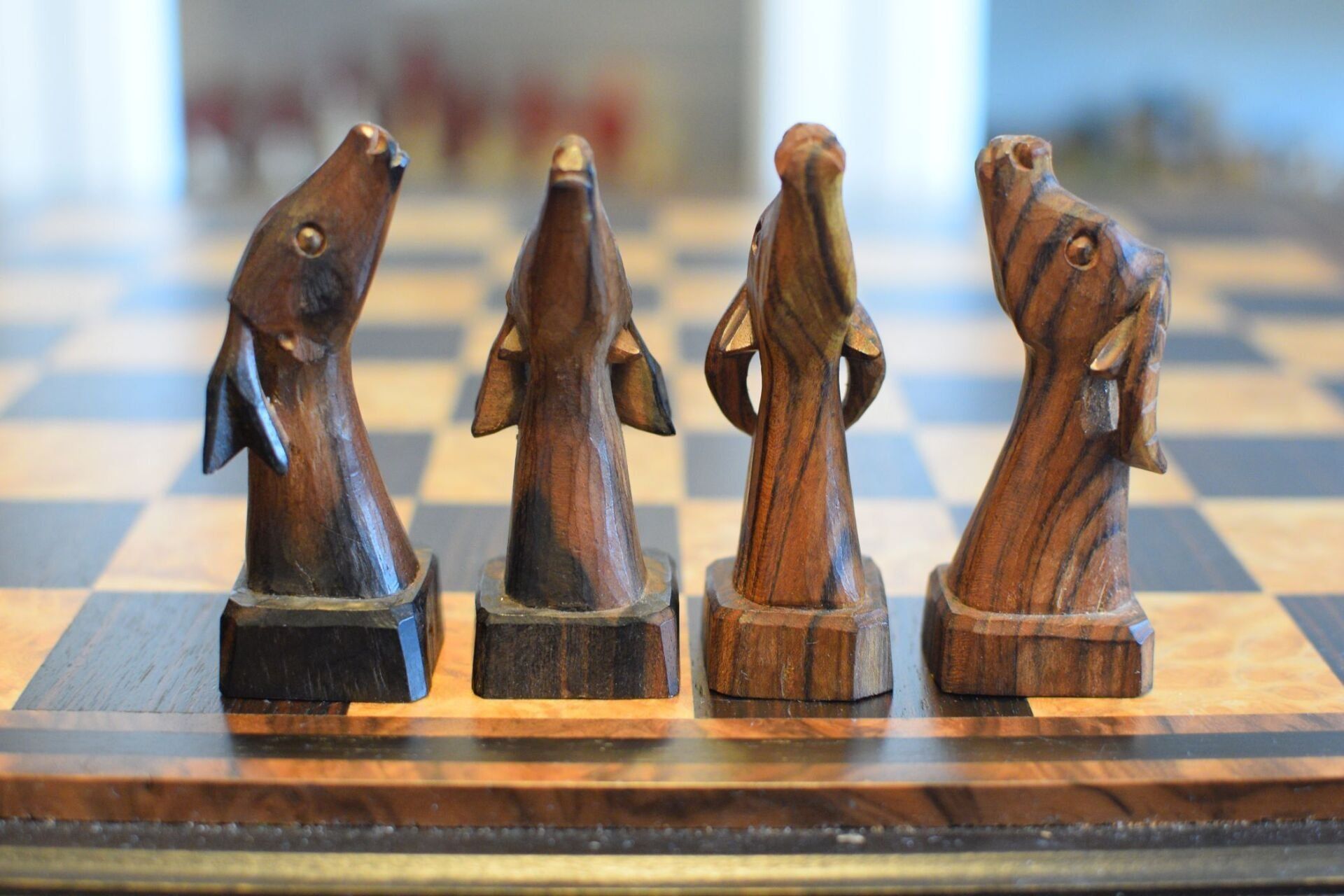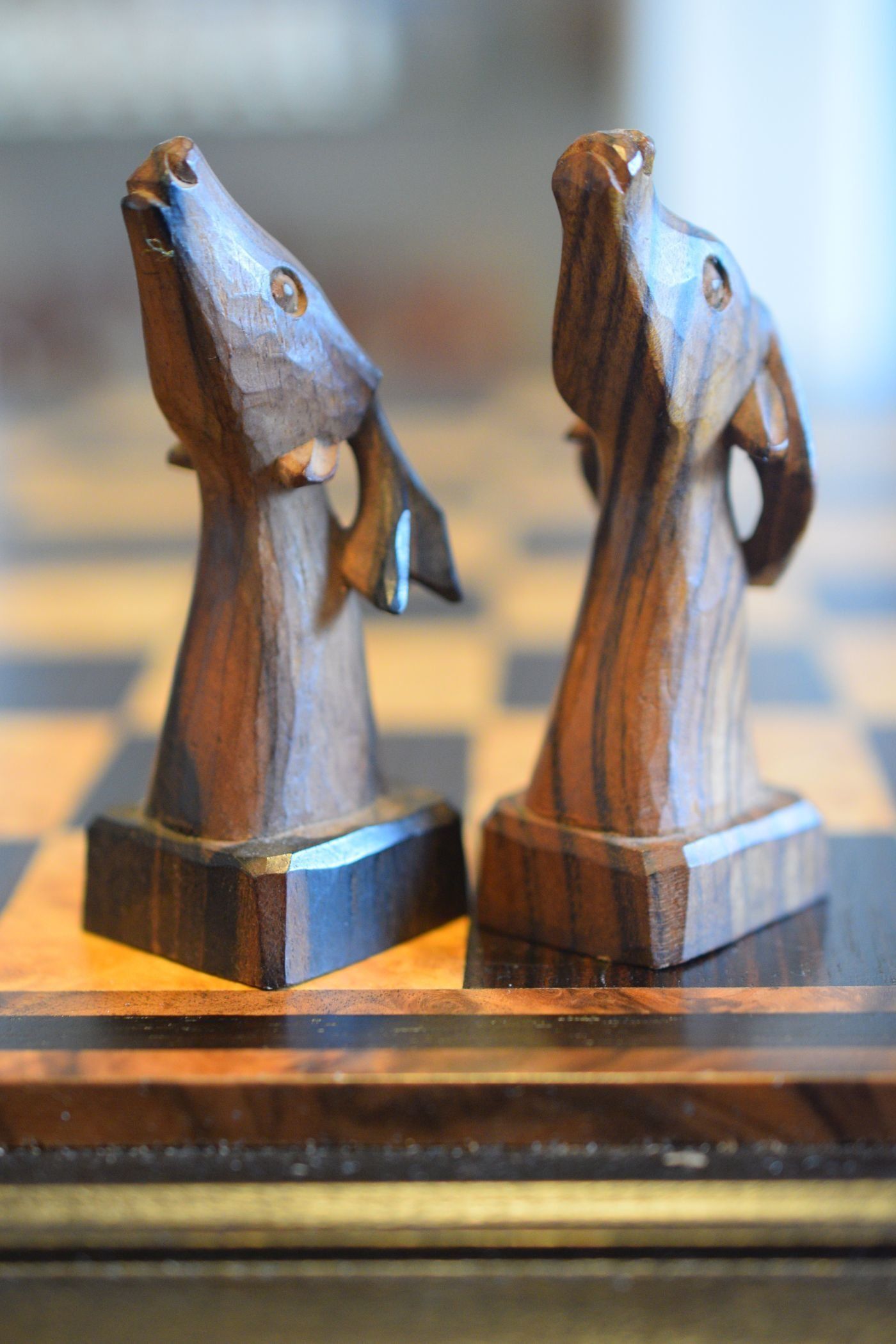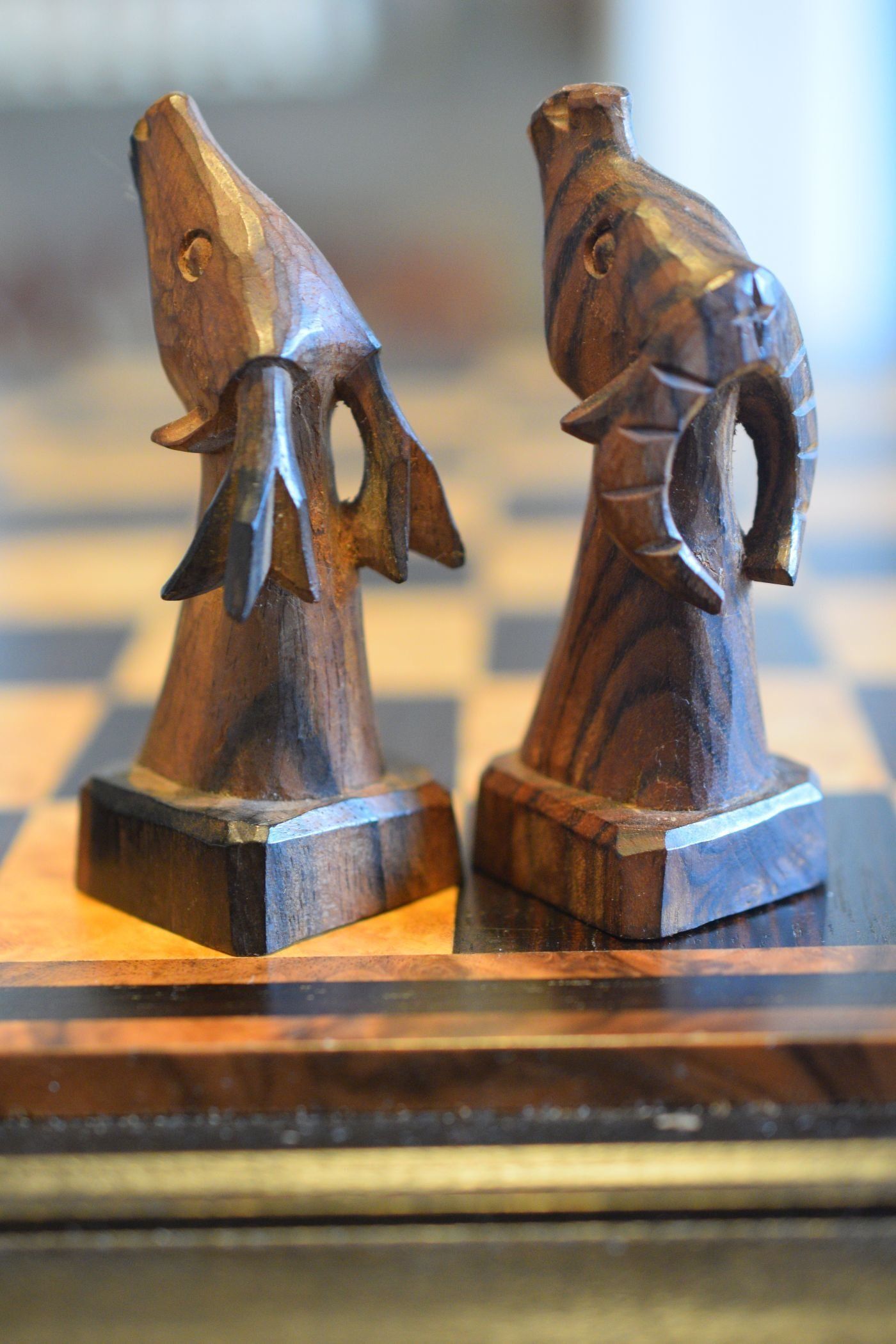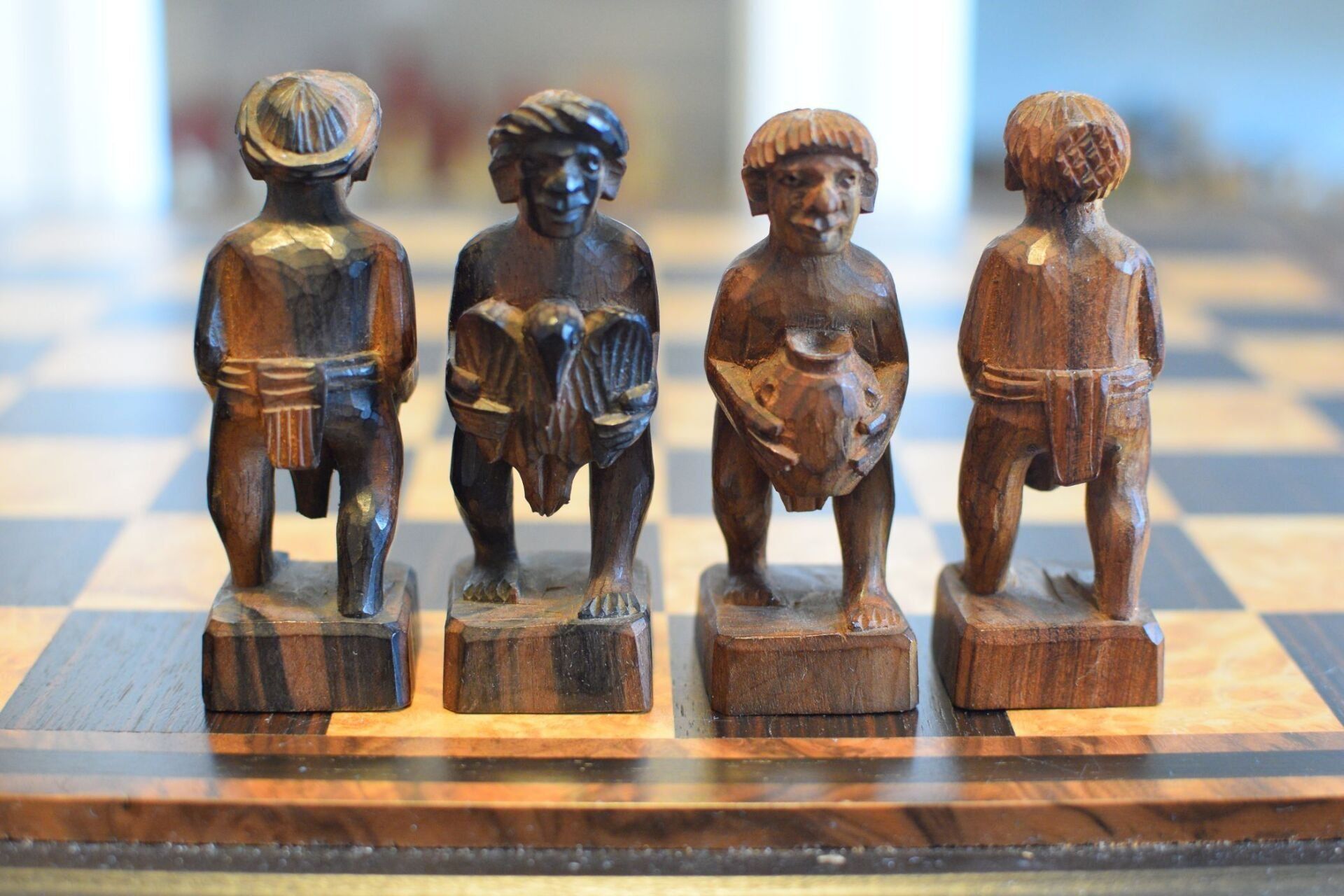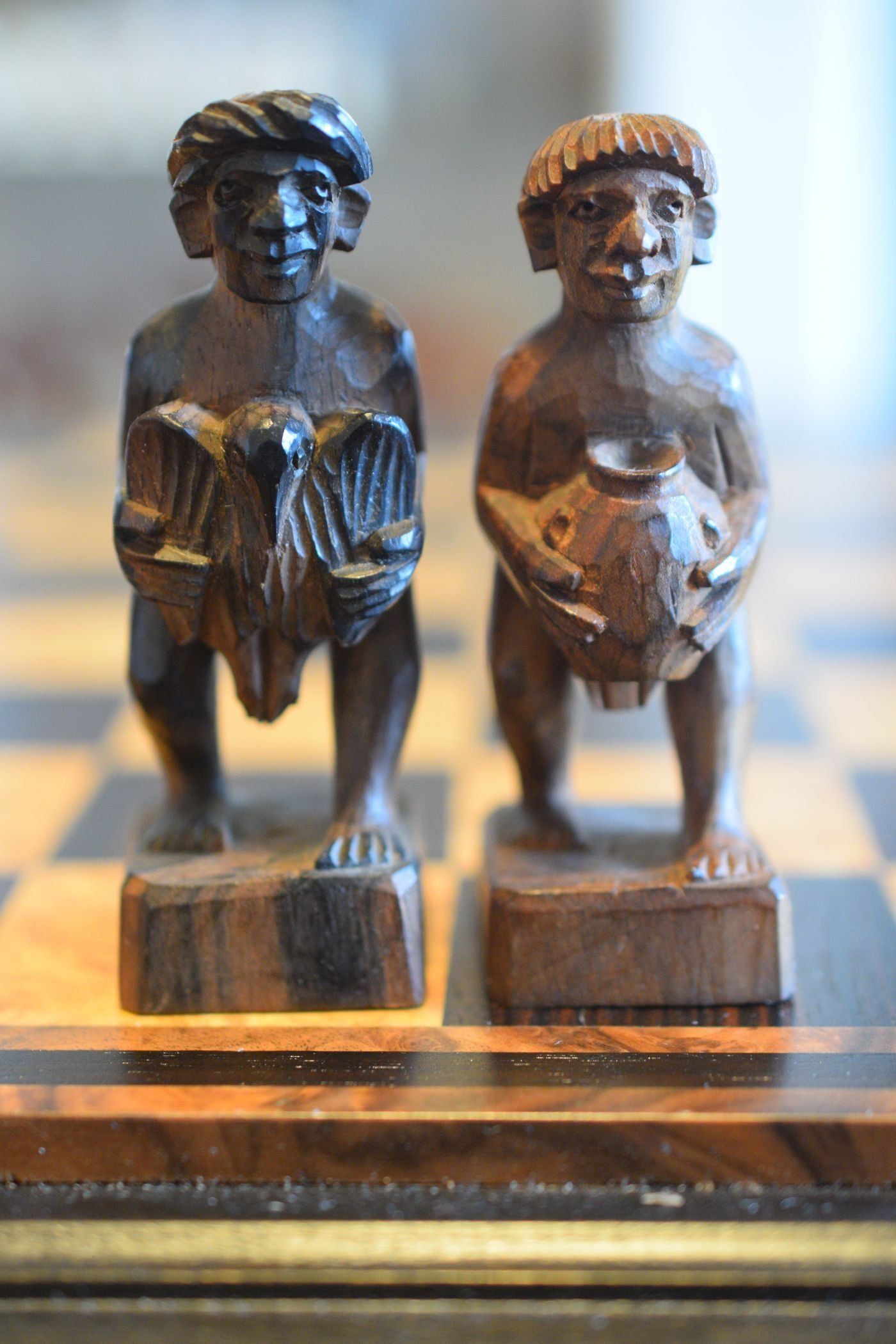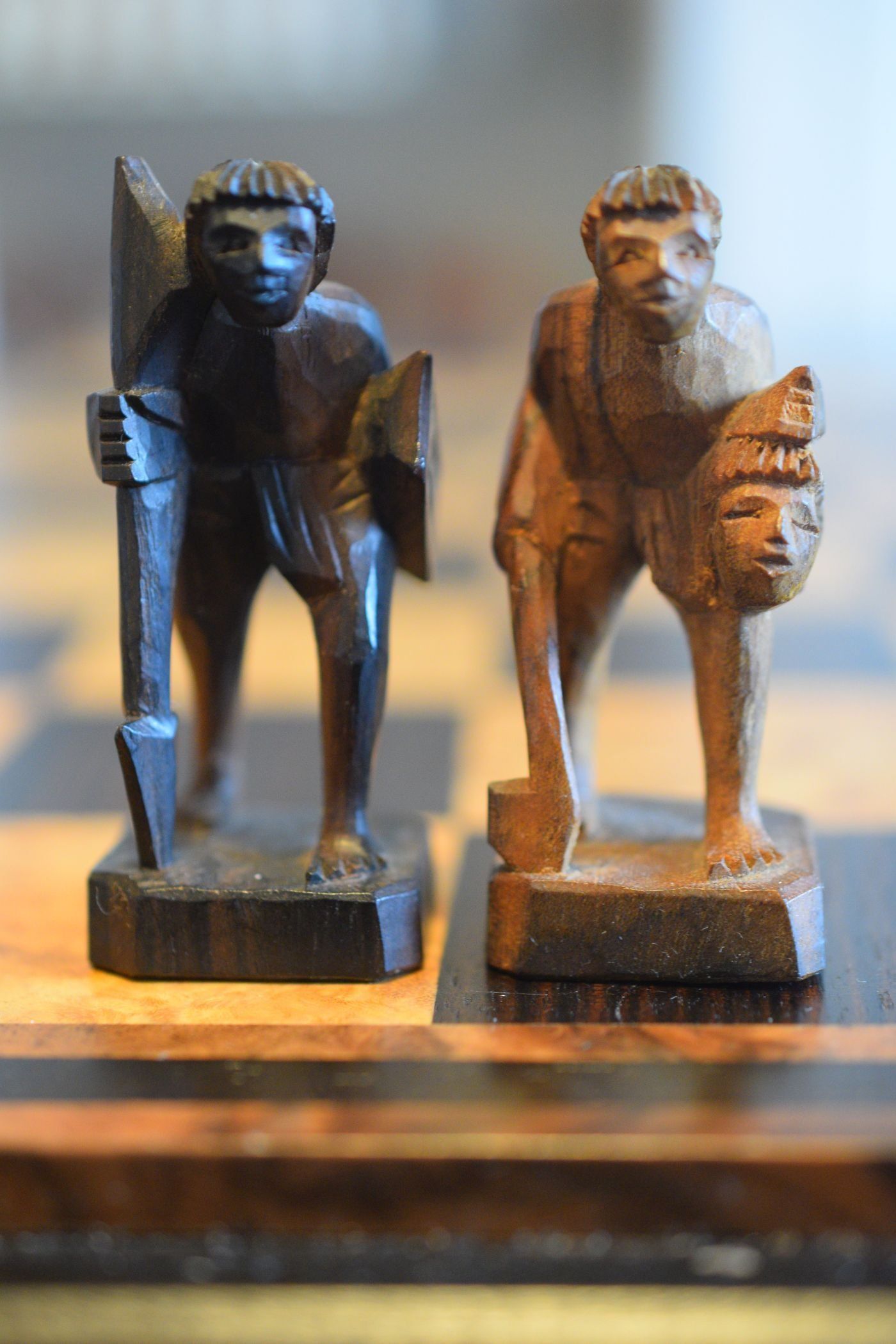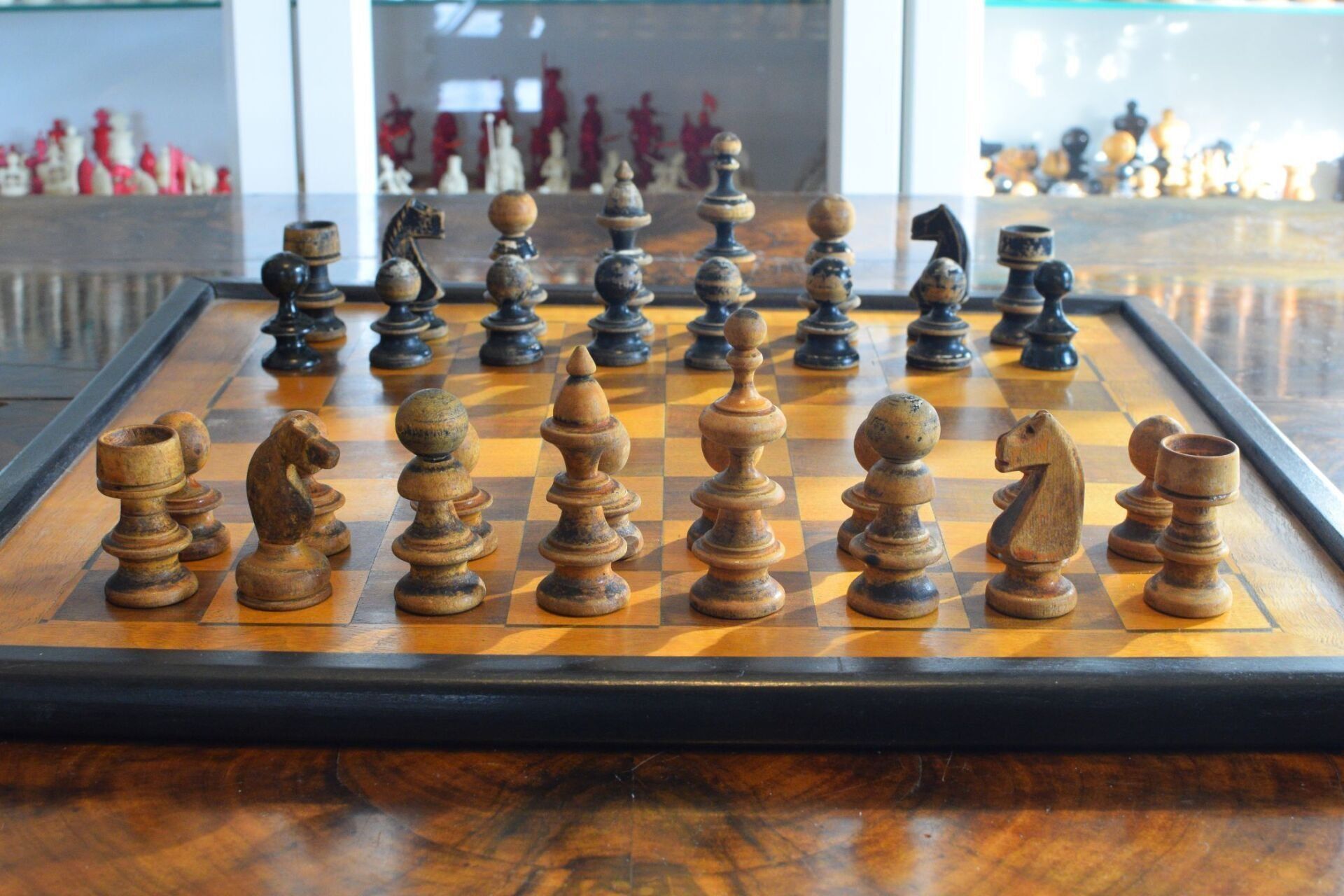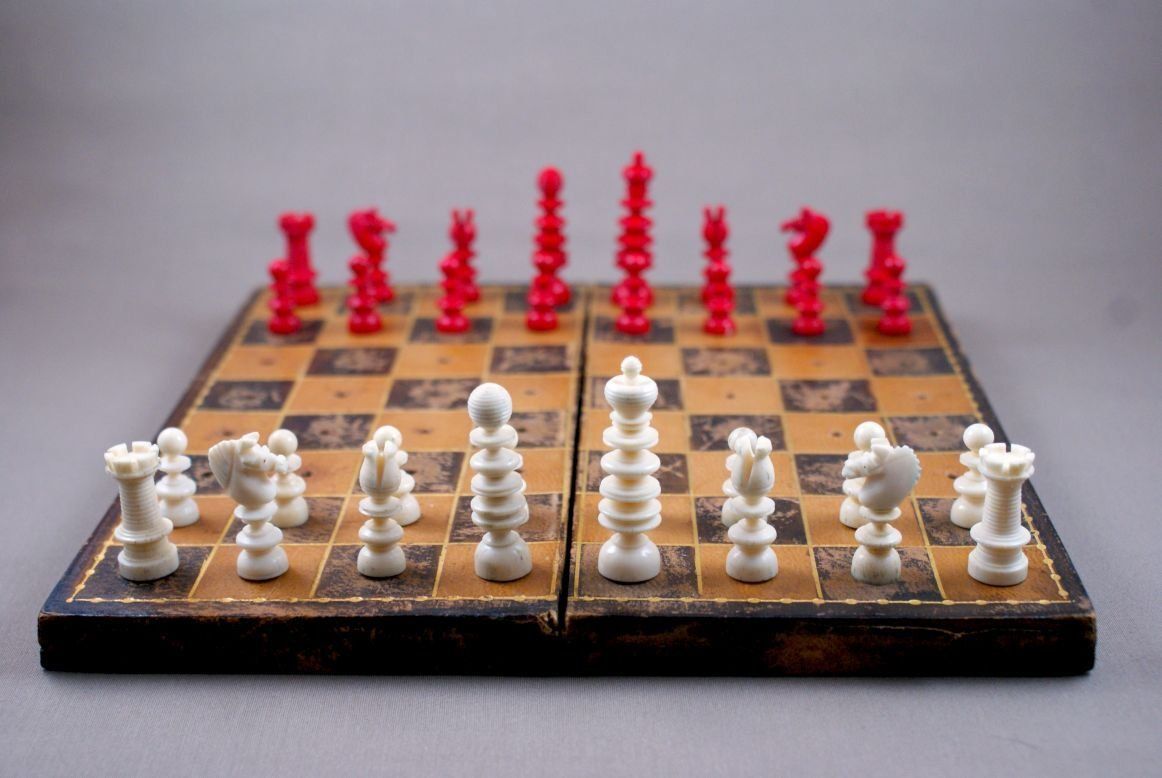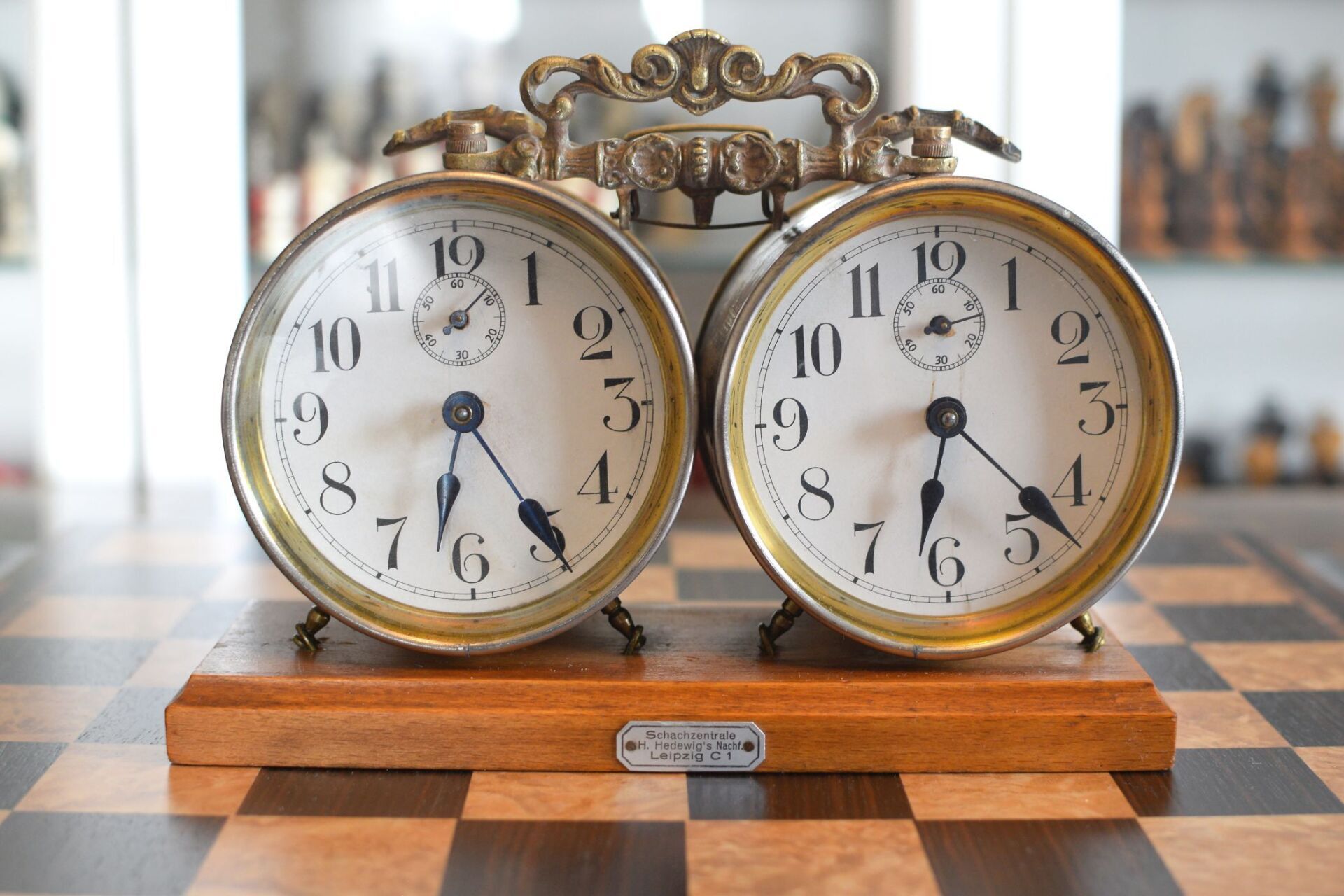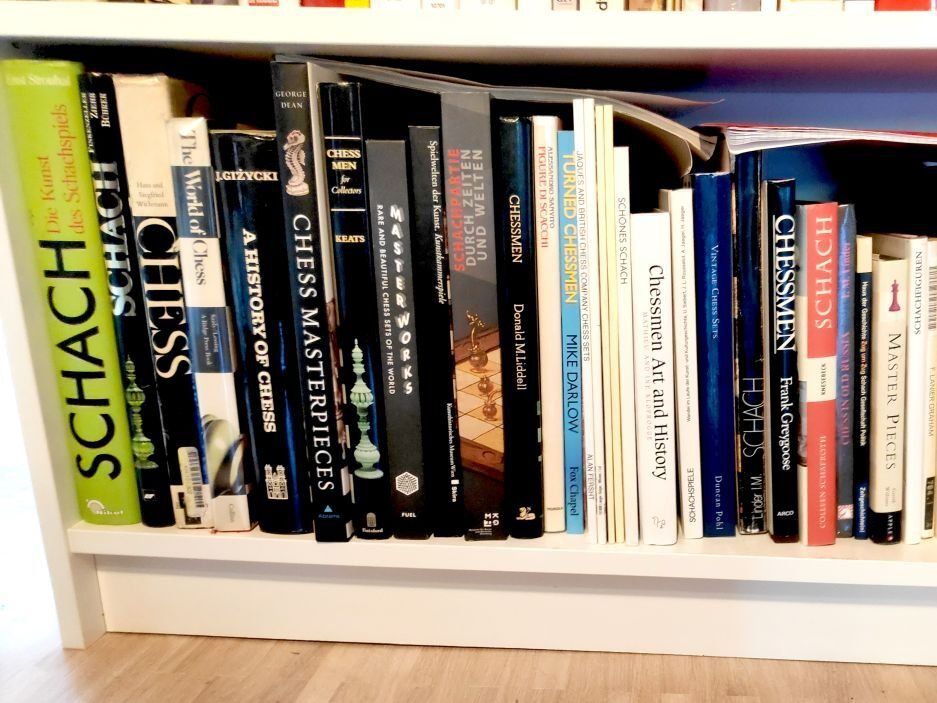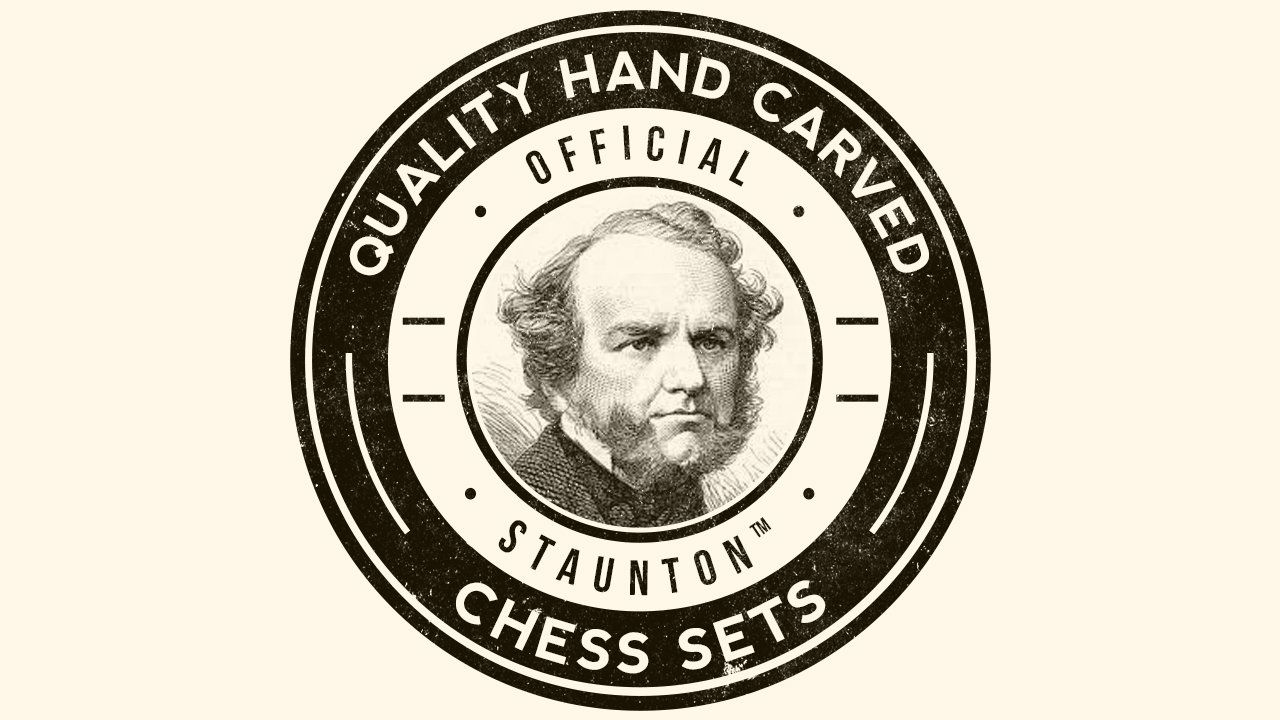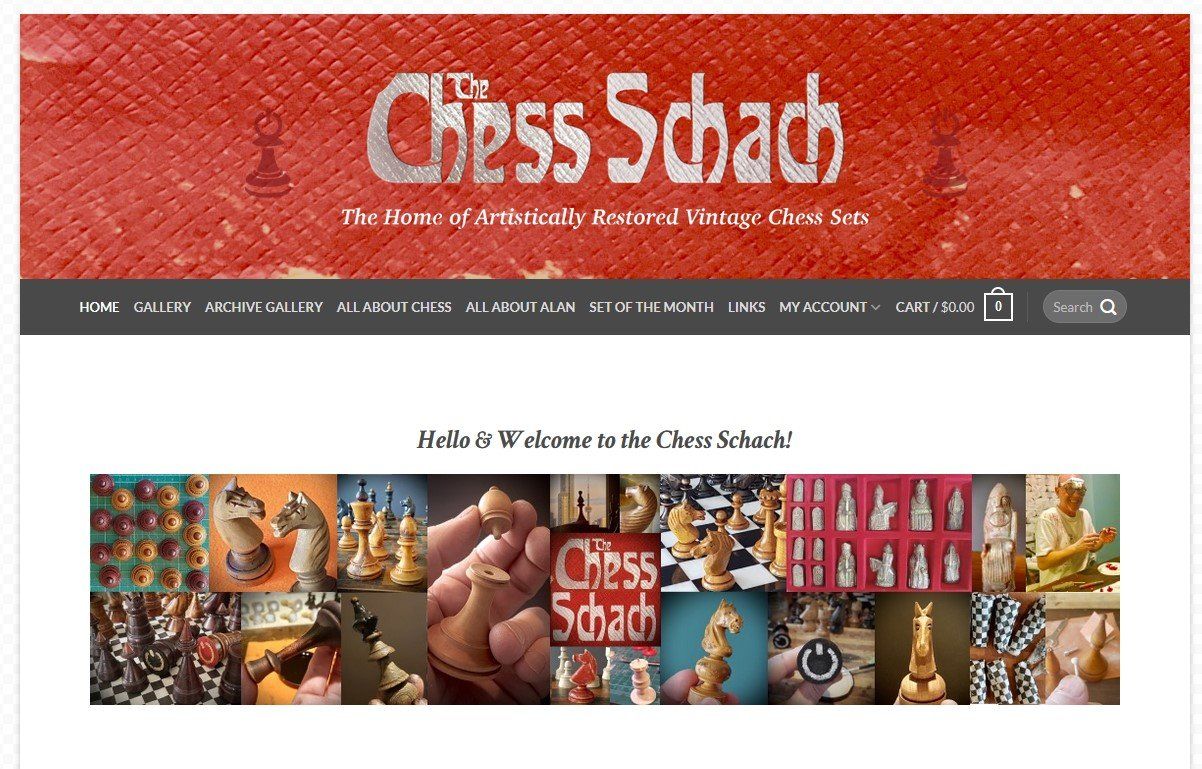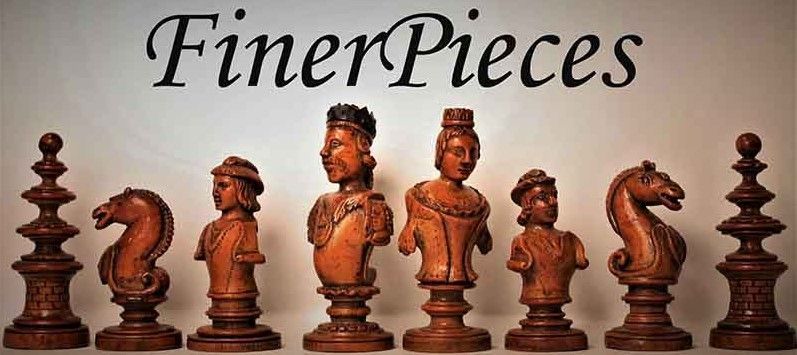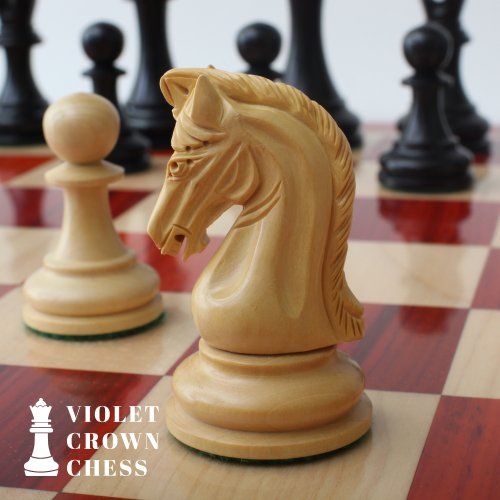Philippine Bontoc & Ifugao Tribal Chess Set, 1970's
Philippine tribal chess set which was made by a local artist in the Banaue region in Northern Luzon. When the set was purchased in the 1970's its maker had recently deceased, as he was a guerilla fighter engaged in combat against the Marcos regime. It was one of the last sets he made and was sold to the last owner by the carver's widow. The pieces are hand carved from local ebony timbers, in particular kamagong for the black pieces and a lighter ebony with a dark grain for the white pieces. Distinguishing the pieces by the colour of the wood is difficult, which is of secondary importance, however, as the set is mainly a decorative one.
The chess set is showing two ethnic groups from the region, the Bontoc on the white side and the Ifugao on the black side. Both belong to the Igorot people. Both kings are shown as chieftains carrying a hunting spear. The white queen is carrying a baby on her back, while the black queen is carrying some kind of rattan backpack used to transport rice or other goods. The rooks are nipa huts typical of the region with a monkey on top of the white hut and a bird on top of the black hut. The white knights are carabao, the local water buffalo, the black knights are Philippine deer. The bishops are tribesmen. The white bishop is carrying a jar, probably containing rice wine used in religious ceremonies. The black bishop is carrying a bird holding it by its wings in front of his chest. The pawns as tribal warriors, the white pawn carrying an axe in his right hand and an enemy's head in his left, thus symbolizing the reputation of the Bontoc people as infamous headhunters. The black pawn is carrying a spear and a shield.
Comparable Ifugao & Bontoc chess sets are shown in Ned Munger, Cultures, Chess & Art, Vol. 3 Pacific Islands & Asia, p. 163-164 & figures 57 & 58.

